Ground Zero – NYC – 11/16/01
The most disconcerting thing about my first post-911 trip to Manhattan was below ground. When the No 1 subway line got to the WTC stop, it went on through. The tunnel was butressed with two-by-fours and other timber, and the lights were the caged, single-bulb construction type, dangling from the rafters. The sensation was that this was some distorted Universal Studios ride through an abandoned future world, which conflicted with the earnest reality of knowing that compacted rubble was sealing off the transit to ground zero, somewhere extremely close by.
You could not get very close, of course, yet there was already a prescribed and active walkway around the entire perimeter where hundreds of people were peering down the 2-3 block distance to the former WTC site. There was still something of a sting in the air, literally, and coatings of dust that were visible. Here: a cluster of balloons, marking I don’t know what, “floats” over the wreckage in the distance.
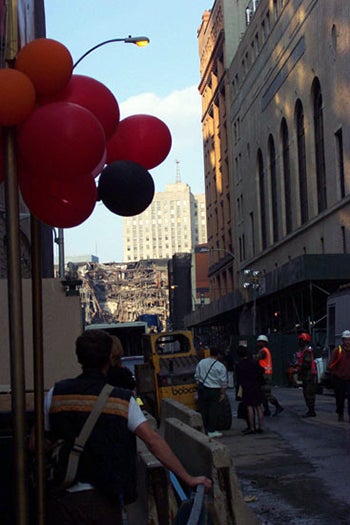
On 09/11/01, I was returning from the Central Campus Recreational Building at around 9 am. Walking back to my office, I noticed members of one of the research groups clustered around a television in the lab… along with their research director. One of the WTC towers was billowing black smoke in an inset image on the screen, while in the foreground was a blurred picture of the Pentagon from some extreme distance. “There’s been some kind of attack on the Pentagon building,” my colleague said.
I was to scheduled to meet another colleague at Starbucks in a few minutes, so I headed down to my office, dropping off my workout gear, and took off towards State and Liberty. People were crowded in strange ways: clustered around monitors and televisions that were turned on inside of stores, listing and reporting to each other on what they were hearing on their radios.
I got to Starbucks and informed my colleague about what little I had gleaned over the last 15 minutes or so. I recall clearly the odd fellow who frequented this Starbucks armed with all kinds of electronic gear: he had a small portable television with him. The volume was turned up. People sat quietly and listened.
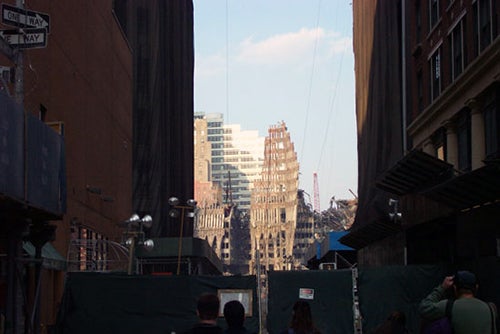
I distinctly recall Peter Jennings saying “the tower has collapsed…” as well as clearly dismissing the idea as some hyperbolic way of reporting whatever was actually happening.
A short time later, he reported the collapse of the second tower.
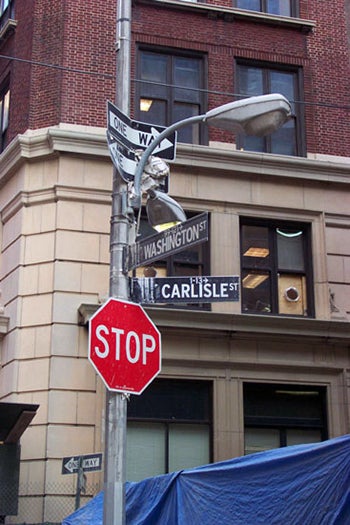
We edged our way over to the small crowd of people looking over tv-guy’s shoulder. The towers had indeed collapsed, of course.
About an hour later, back at the chemistry building, the general news was now well known. One of the graduate student instructors came up to me and asked if she should meet her class that afternoon. You can debate the wisdom of this reply, but I answered that this was a decision that the University needed to make, not us. If there were students who were going to show up as scheduled, then we needed to be there unless the institution said otherwise.
About noon, the Provost cancelled classes for the rest of the day. Within a few hours, the University had assembled links to advice and resources for instructors to use in the classroom.
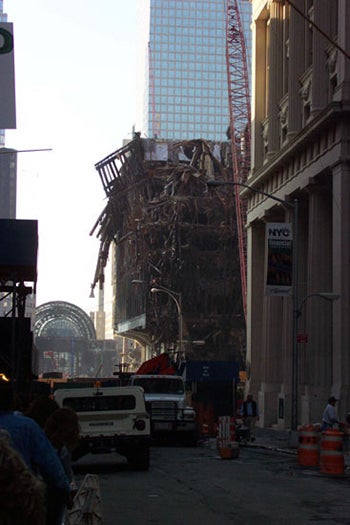
By early evening, the faculty were informed that classes would be held as scheduled on 09/12/01. The Provost also instructed the faculty to devote the 09/12/01 class day to discuss, reflect, and give students a chance to decompress from the events of the day.
And while I understood the spirit of this message, I was strangely troubled by it.
In my opinion, the Provost had stepped over an incredibly important line. Regardless of the good intent, directing what the faculty do in their classes is a problem in academic freedom. Where’s the line, I wondered? I often wonder where the line is. Under what circumstances can the Provost direct what goes in during the time when I am responsible for carring out the prescribed responsibilities for giving my course? Ironic, I guess, given that I had recommended to that GSI that we needed to wait for word from the university about holding classes that day.
I was not intending to make a Federal case about the Provost’s actions, but I also could not help but think about it as a precedent that I, as a professor, was not particularly overjoyed to have experienced.
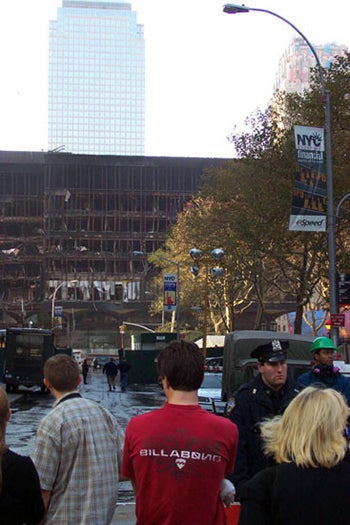
At 9 am on Wednesday, 09/12/01, I was in the first group of courses that met when the University re-opened. Did I retool my course that day? Did I take the 300 or so mainly first-year college students, who had been in school for a week at that point, and redirect the content of the course to the discussion directed by the chief academic officer of the University?
Would you?
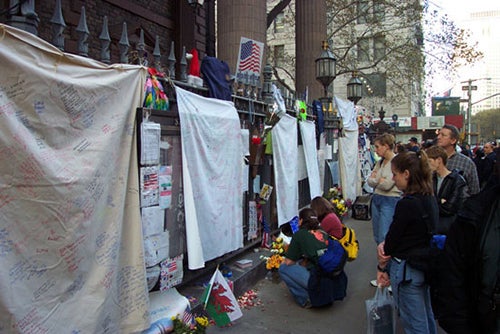
At first I was not going to say anything; that was my decision. Then I changed my mind.
I thought about that graduate student’s question: should I meet my class? I said that we should, because it was not our decision to make: the university needed to provide the intellectual and moral leadership for this question. I tranferred that idea over to my class. The students would be looking to me for leadership of sorts. I needed to let them know where I was at, and why. It is not their place to make those decisions and figure it all out on their own; I needed to decide and share this decision with them.
So, I took the first 5 minutes and told them about history and how the events they were living during this last 24 hours would forever frame their lives. How I had grown up with the assissinations of Presidents and other public figures who, in some odd way, represented clear and obvious targets. The tragedy of their generation was how the violence had become unstructured: whether it was Columbine or the WTC, people who were no one’s speciffic target were now general targets, and that this could be deeply unsettling.
I urged anyone who needed to take care of themselves to do so, and directed them to the growing resources that the university was providing for them. I urged anyone who needed these services to go, now, and take care of his or her mental health if it seemed like that was the thing that needed to be done.
I also said that while the University had instructed me to turn this day over to an open discussion of the events from the previous day, that I did think it was the right thing to do, that we had all been thinking about nothing else for 24 hours, and that I thought that a chance to think about something else was an even better idea. I offered a time that I would be available, however, outside of class, for anyone who wanted to come by and talk with me.
And so I gave my normal class on 09/12/01, but I also integrated into it about 5 minutes of the sense of leadership and moral responsibility that I hold towards my students as their professor. It was gratifying (of course) to have a large number of students come up after class and thank me for both what I had said, and also for trying to shoehorn a little normalcy back into their lives by simply going ahead and holding our scheduled class.

